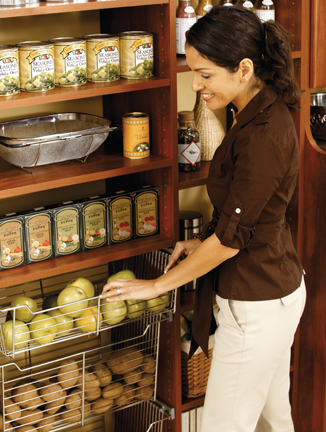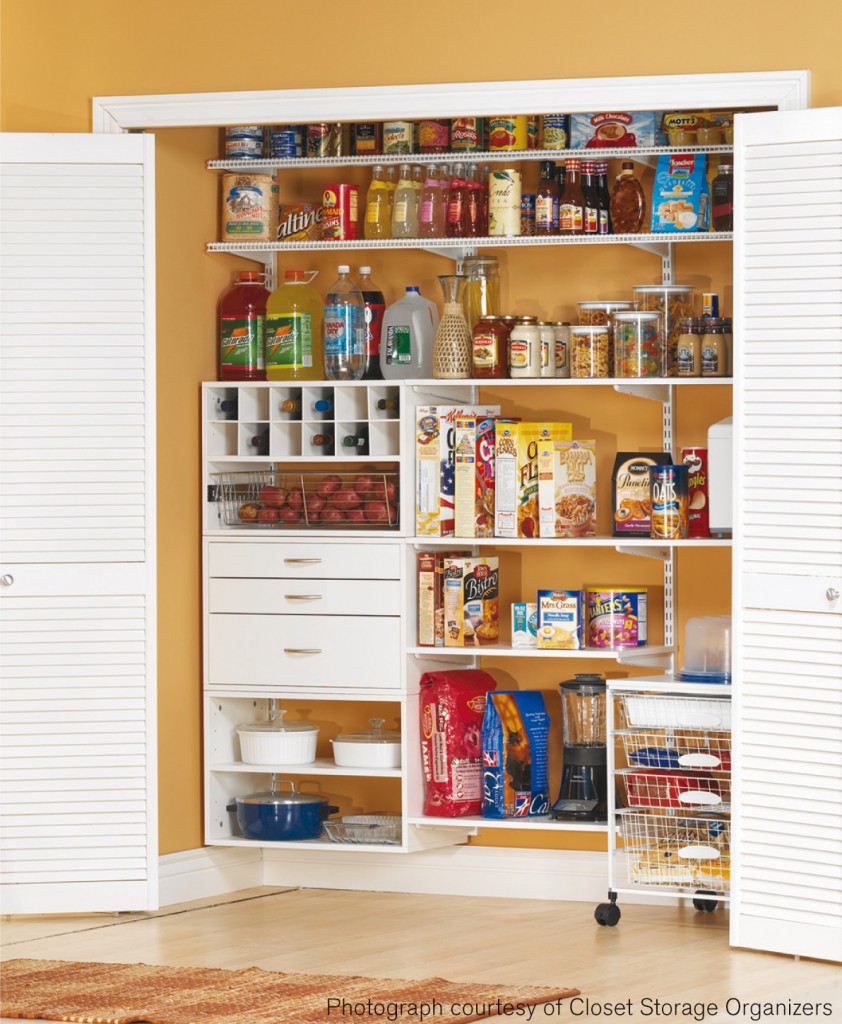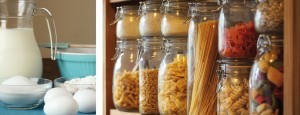Pantry Perfection: Organized for Optimum Performance
 A new baby is coming home from the hospital today and a casserole is due next door before you can say “cream of mushroom soup.” The soccer team has climbed the shelves trying to reach the Little Debbie’s, sending your collection of plastic tubs and lids rolling across the kitchen floor. And, who knew that flour could go bad? With the winter holidays (and all that cooking!) quickly approaching, it’s time to get your pantry in order. Forget the beautiful pictures of Martha Stewart-esque pantries with their matching apothecary jars and sleek Swedish shelving. You don’t need a professional label-maker and color-coordinated lined wicker baskets to get the job done. Really, all you need is time and a sense of your kitchen habits.
A new baby is coming home from the hospital today and a casserole is due next door before you can say “cream of mushroom soup.” The soccer team has climbed the shelves trying to reach the Little Debbie’s, sending your collection of plastic tubs and lids rolling across the kitchen floor. And, who knew that flour could go bad? With the winter holidays (and all that cooking!) quickly approaching, it’s time to get your pantry in order. Forget the beautiful pictures of Martha Stewart-esque pantries with their matching apothecary jars and sleek Swedish shelving. You don’t need a professional label-maker and color-coordinated lined wicker baskets to get the job done. Really, all you need is time and a sense of your kitchen habits.
Step One: Pull Out and Purge
Pull everything out of the pantry, and throw away anything that is past its expiration date. Next, consider donating the items that you know in your heart you will not eat, even if you read somewhere that it is a “superfood,” even if you had good intentions to try Asian-fusion cooking but just never got around to it. If there’s an opportunity to consolidate boxes of rice or brown sugar into one container instead of several, please do so now.
 Step Two: Put the PB with the J
Step Two: Put the PB with the J
Store ingredients and supplies together for your go-to meals so you can reach in and easily grab everything you need to make a quick meal or snack. Likewise, store the cooking-soups with the cooking-soups, the meal-soups with the meal-soups, and the canned vegetables by type. Line everything up so you can scan labels and keep stock of ingredients. Store baking items together on one shelf—including flour, sugars, and baking spices, and keep the muffin mixes and paper muffin cups here, too. In my pantry, I have a “starchy side dishes” shelf. I know that’s where I can find rice, couscous, quinoa and pasta. I also keep the jarred tomato sauce and gravy on that shelf because those things just seem to always go together. A “breakfast” shelf is nice to establish if you have overnight visitors; they can quietly pad into the kitchen and find what they need without feeling as though they are rummaging around just for a bowl of cereal. A “snacks” shelf at kid-height is also nice to designate so that children and their guests can raid the pantry during a playdate and help themselves to afternoon treats. An adult household might set aside space for more grown-up treats such as water crackers, fancy olives, and other goodies you might serve when friends drop in for an unexpected visit. The only “right” way to organize a pantry is the way that best serves your needs and routine.
 Step Three: Apply Pantry Principles to Every Cabinet
Step Three: Apply Pantry Principles to Every Cabinet
You may find that your pantry project morphs into a global storage reorganization. You’ll find yourself going around your kitchen and throwing away or donating useless items, storing all paper goods together in one spot, and moving the cups and coffee mugs closer to the sink and coffee pot. As you ponder whether your things are stored in the most logical place they could be, pretend you’re a visitor in your home and see if your Band-Aids are where a guest would assume they are. Would someone unfamiliar with your kitchen be able to guess which drawer holds the silverware or would they have to test three drawers before finding the correct one? One final consideration as you decide what-goes-where is the size and weight of your items. Heavy things should go down low, lighter things up top. Most shelving is adjustable to accommodate the right amount of headspace needed for a box of cereal versus a can of corn. Organizing tools, cubbies and risers can easily be found in any home improvement store—but take some measurements of problem spots and untapped potential storage areas before you go shopping.
If you have the inclination, trick out your pantry with fresh shelf lining paper, a crisp white coat of paint, and in-cabinet lighting. But realize those embellishments are not necessary to have a good, working pantry. Pantry perfection lies in grouping items in a way that makes sense, staying on top of expiration dates, having a spare supply of your most-used items, and a set
of ingredients for your go-to recipes.






